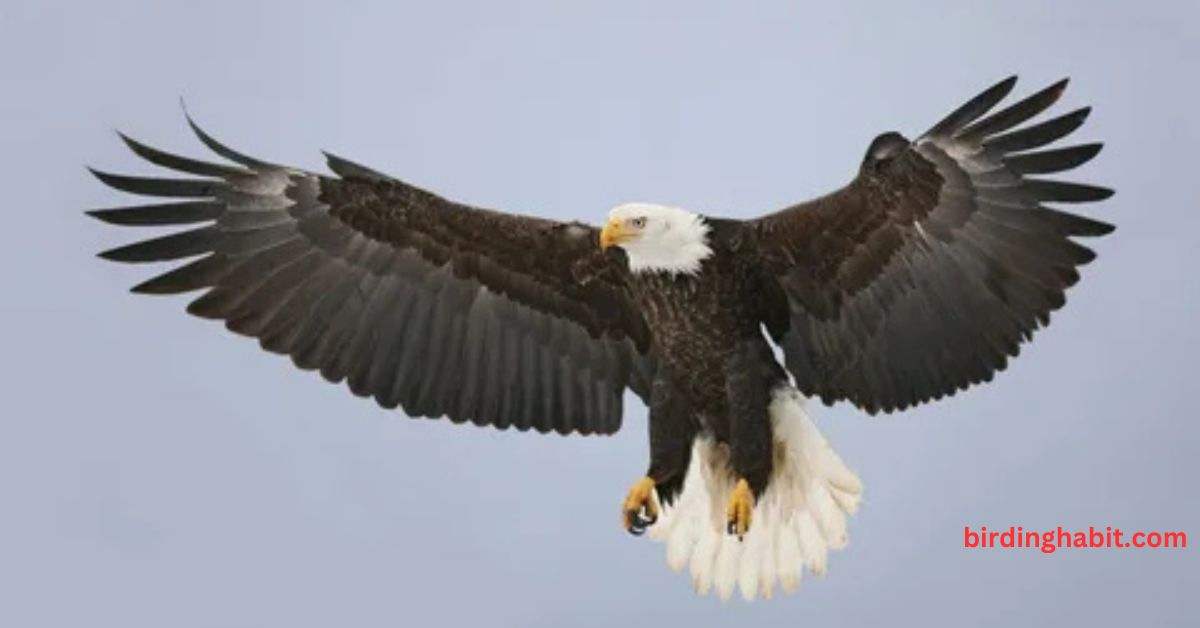The eagle has long been revered as a symbol of strength, freedom, and resilience, embodying traits that resonate deeply across cultures and societies.
From its majestic flight to its formidable presence in the natural world, the eagle represents ideals that humans aspire to and admire.
But what is it about this bird that has earned it such a revered status? Let’s explore the key reasons why the eagle is synonymous with strength and freedom.
Its commanding presence, soaring flight, and fierce independence make it a perfect symbol of both power and liberty. From ancient mythologies to modern emblems, the eagle’s association with freedom and strength has stood the test of time.
This majestic bird’s connection to both the heavens and the earth reinforces its status as a powerful symbol, reminding us of the enduring pursuit of freedom and the strength needed to overcome obstacles.
In exploring what makes the eagle a symbol of strength and freedom, we uncover its rich symbolism rooted in nature, history, and culture, and why it continues to inspire and captivate.
1. Physical Strength and Power
Eagles are known for their impressive physical attributes, which contribute to their reputation as symbols of strength. As apex predators, eagles possess sharp talons, powerful beaks, and incredible eyesight.
The bald eagle, for example, can have a wingspan of up to 8 feet and is capable of flying at speeds of over 30 miles per hour. Its hunting abilities are unparalleled, allowing it to take down prey much larger than itself, including fish, small mammals, and even other birds of prey.
The sheer power that an eagle exhibits in its hunting and survival tactics is a direct reflection of its physical prowess.
The strength of an eagle is not only seen in its ability to dominate the skies but also in its ability to endure harsh environments.
Whether soaring at great altitudes or navigating fierce winds, eagles exemplify an unwavering resilience that underscores their symbolic representation of strength.
2. Unmatched Freedom in the Skies
The eagle’s flight is perhaps its most striking feature, symbolizing freedom in its purest form. With their powerful wings, eagles soar high above the ground, often seen gliding effortlessly on thermal updrafts. This unbounded freedom in the sky is a powerful metaphor for independence and autonomy.
The eagle’s ability to fly at altitudes of up to 10,000 feet and travel vast distances without needing to rest is symbolic of the freedom to roam beyond limits.
This flight represents not just physical freedom, but a sense of liberation that transcends earthly constraints, mirroring the human desire for independence, exploration, and self-determination.
In many cultures, the eagle’s flight is seen as a spiritual journey, connecting the earthly realm with higher planes of existence.
Why Are Eagles Considered Master Hunters in the Sky?
Eagles have long been regarded as some of the most formidable and skilled hunters in the animal kingdom, earning them a reputation as master hunters of the sky.
With their exceptional hunting techniques, extraordinary physical abilities, and unmatched precision, eagles are the epitome of aerial predators.
But what exactly makes them such effective hunters? In this article, we’ll explore the unique traits and abilities that enable eagles to dominate the skies and capture their prey with unparalleled efficiency.

1. Exceptional Vision: The Key to Their Hunting Success
One of the most distinguishing features that sets eagles apart from other birds of prey is their extraordinary eyesight. Eagles are known to have some of the sharpest vision in the animal kingdom, capable of seeing up to 8 times better than humans.
This remarkable eyesight is not only important for spotting potential prey from great distances but also for tracking movement while soaring high in the sky.
Eagles have specialized retinas that contain a high density of photoreceptor cells, which allow them to detect minute details from miles away For example, a bald eagle can spot a fish swimming in the water from as high as 3,000 feet above ground.
This acute vision is crucial for spotting prey during flight and for identifying animals that may be hidden in the environment below, such as small mammals or other birds.
2. Powerful, Adaptable Flight
Eagles are known for their exceptional flying abilities, which play a central role in their hunting prowess. Their large, broad wings allow them to glide effortlessly for long periods, conserving energy while scanning for prey.
Their strong wings and specialized feathers also enable them to maneuver quickly and effectively when needed.
In addition to gliding, eagles are skilled at diving at incredible speeds to capture their prey. Some species of eagles, like the golden eagle, can dive at speeds of up to 150 miles per hour, making their attacks not only swift but also highly efficient.
This combination of soaring and diving gives eagles a significant advantage when hunting, allowing them to cover vast areas in search of food and strike with pinpoint accuracy.
3. Cultural and Historical Significance
Throughout history, the eagle has been a symbol of power, leadership, and freedom. In Ancient Greece, the eagle was associated with Zeus, the king of the gods, symbolizing divine strength and authority.
The Romans adopted the eagle as a symbol of their empire, associating it with military might and sovereignty.
In the United States, the bald eagle was chosen as the national emblem in 1782. Its selection was not accidental; it reflects the country’s commitment to independence, freedom, and strength.
The eagle became a representation of American values, standing as a reminder of the nation’s spirit of self-determination and the rugged resilience that shaped its identity.
4. Resilience and Endurance
Eagles are not only strong in physical attributes, but they also display remarkable resilience in their life cycle. For instance, the process of molting, where an eagle sheds old feathers to grow new ones, is a powerful metaphor for transformation and renewal.
This ability to endure difficult periods and emerge stronger mirrors human experiences of overcoming challenges and adversity. Additionally, eagles are known for their long lifespan, often living for several decades in the wild.
This endurance is symbolic of the tenacity needed to withstand the hardships of life, making the eagle a perfect representation of strength and longevity.
5. Spiritual and Symbolic Meaning
In many indigenous cultures, the eagle holds profound spiritual significance. For Native American tribes, the eagle is often seen as a messenger between humans and the divine.
Its ability to ascend to great heights makes it a spiritual symbol of connection to the heavens and a reminder of the power of higher consciousness.
The eagle’s keen vision is also symbolic of clarity and perspective, urging individuals to see beyond the surface and to have insight into the true nature of things.
In various belief systems, the eagle is seen as a protector and guide, offering strength to those who seek it and providing the freedom to rise above challenges.
Its role as a spiritual figure further enhances its association with ideals of freedom, strength, and the higher aspirations of the human spirit.
6. A Universal Symbol
While the eagle is particularly prominent in American and European cultures, its symbolic presence is felt across the globe. In Asia, the golden eagle is a revered figure in some cultures, representing courage and dignity.
Similarly, in Africa, the eagle is a symbol of royalty and majesty, representing the power and authority of kings and queens.
This universal recognition of the eagle as a symbol of strength and freedom highlights its ability to transcend cultural boundaries.
Its majestic appearance and powerful attributes are qualities that resonate with people everywhere, making the eagle a global icon of power, independence, and freedom.
Conclusion
The eagle, with its powerful flight, striking physical strength, and enduring presence, is a bird that represents the very essence of freedom and strength.
Whether soaring high above the clouds or perched majestically on a mountaintop, the eagle’s attributes inspire admiration and respect.
It is not only a creature of the natural world but a symbol that resonates deeply with human aspirations and values.
Through its grace, power, and resilience, the eagle continues to be a timeless emblem of freedom, strength, and the indomitable spirit that drives us all to soar higher.


